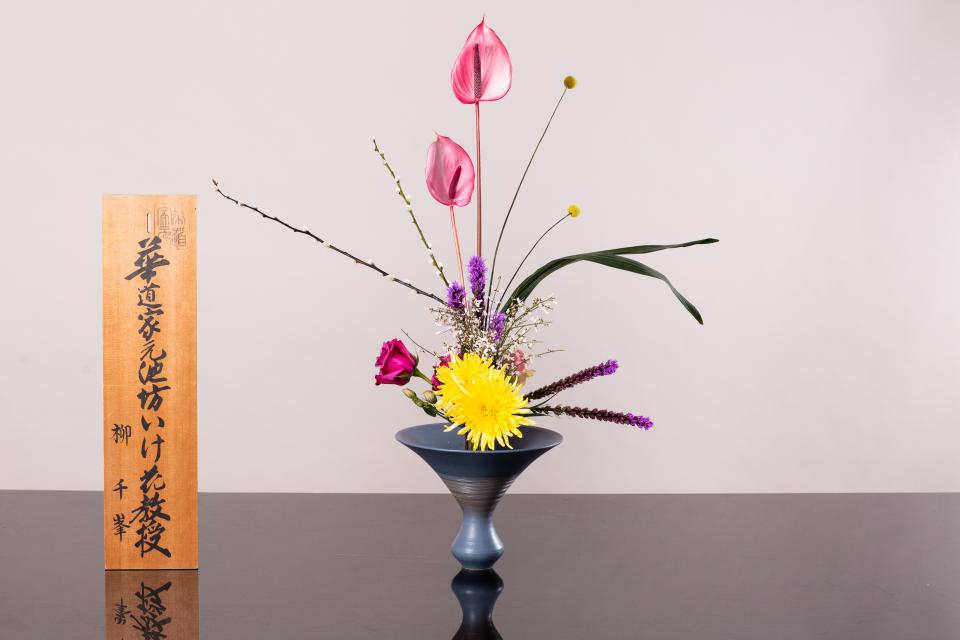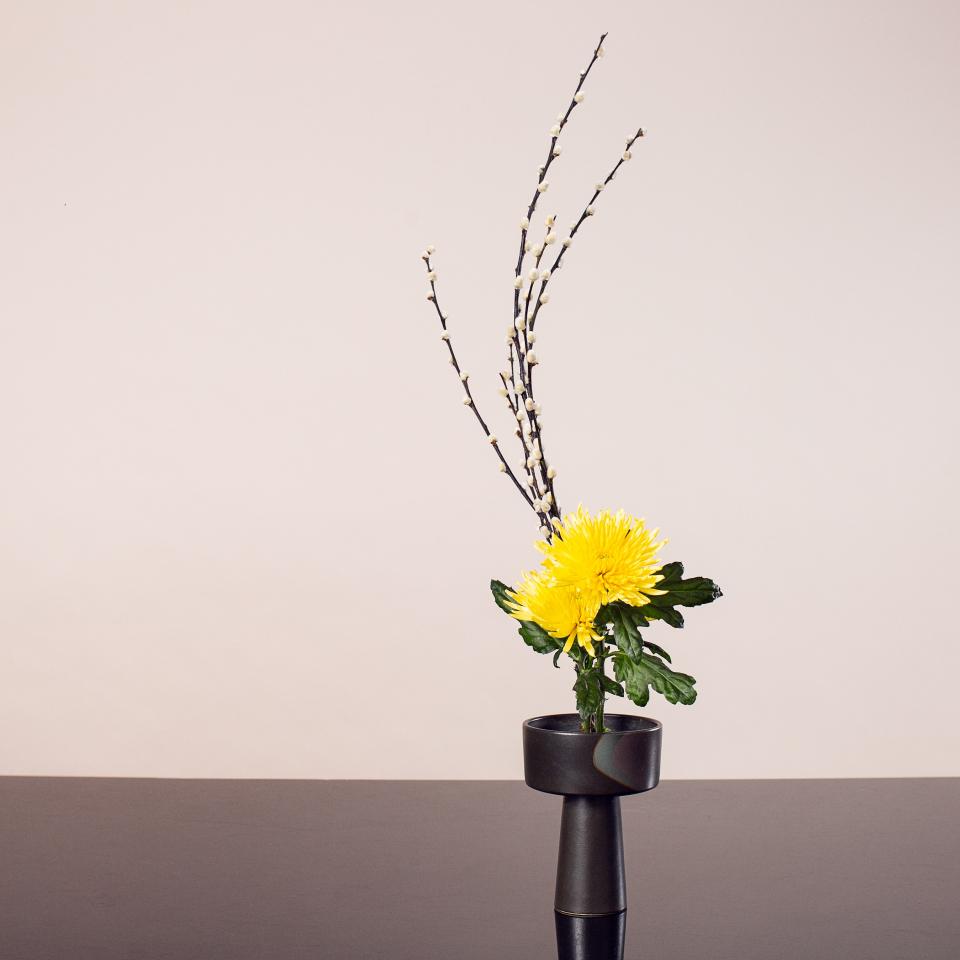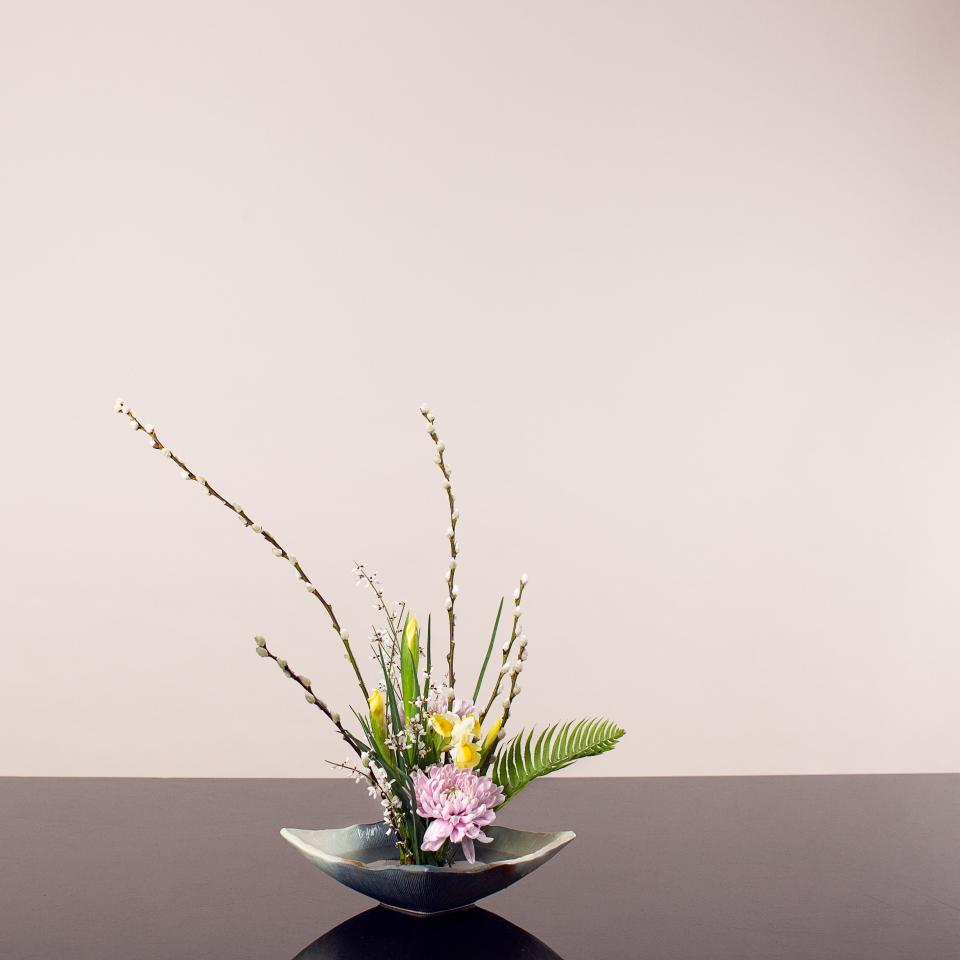Meditating on Beauty
Ikebana is more than a physical piece of art. The focus is on the process of creation. It is a meditative act typically undertaken in silence for deep contemplation and appreciation for beauty. The whole universe is contained within a single flower and something as small as a petal can open our minds to so much more.
The practice combines aesthetic sensitivity, knowledge of the environment and the search for connection with the mystical world of nature. The more we contemplate on each flower, the more we understand the natural cycle of life, seasons and the fragility of human existence.
We have partnered with Tomoko Sempo Yanagi, a professor with the Ikenobo school of Ikebana to understand the power of Ikebana. She explains that “flowers are not only beautiful, but they could reflect the passing of time, and how we respond to an ever-changing future. There is beauty not only in an open flower but also a flower’s bud which holds the energy of life as it opens toward the future. Together with flowers, humans are vital parts of nature and our arranging ikebana expresses this awareness.”
Achieving Harmony
Ikebana explores the frictions between the visible and the invisible, permanence and ephemerality, luxury and simplicity. It’s yin and yang. Within the creative process itself, serenity and energy represent opposing forces which are harmonised through Ikebana.
The practice has evolved throughout the centuries, with three key styles emerging: Rikka, Shoka and Freestyle.
RIKKA

Rikka's origin lies in the 16th century and its structure has informed many modern interpretations. Often translated as “standing flowers”, Rikka is formed through seven to nine parts. Each part brings together contrasting but complementary materials in a single vase symbolising mountains, earth and water. They all come together to reflect and express the beauty of a natural landscape.
SHOKA

Shoka shofutai is an asymmetrical style that focuses on the inner beauty of nature. It draws inspiration from the cosmos - shin, soe and tai – heaven, earth and human. The arrangements are often triangular, based on three lines that unite in a vase to reflect life's perpetual change and renewal.
FREESTYLE

Freestyle has no set form and is the most recent style to emerge from Ikebana’s long tradition. It reflects personal expression rather than following traditional structure, and therefore has become a popular, contemporary expression of the art.
Freestyle is broadly divided into a naturalistic and abstract style. Both styles use flowers in new ways yet respect the beauty and essential qualities of each material. Flowing from the artist’s inventiveness, each arrangement is unique in the effect or mood it evokes.
If you feel like trying your hand at Ikebana, we'd be curious to see the results. Tag your arrangements with #funnyhowflowersdothat on Instagram and we'll share the best examples with our followers.





